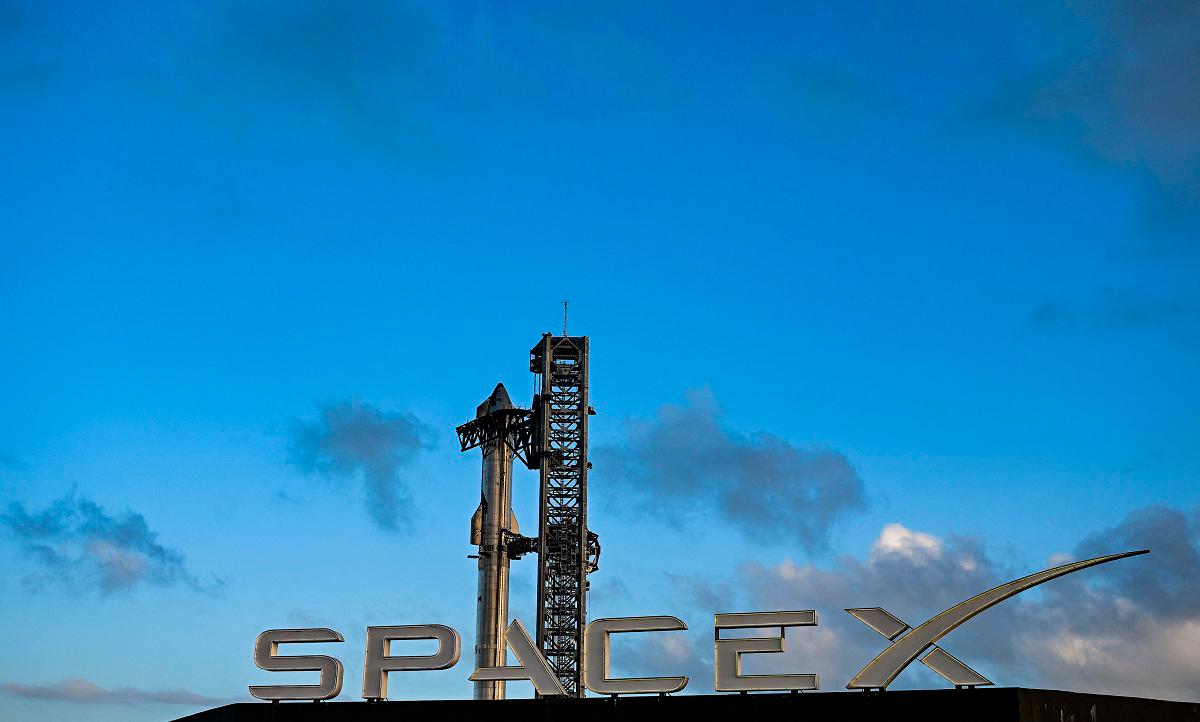HOUSTON: One of Elon Musk’s SpaceX Starships exploded during a routine test in Texas late Wednesday, law enforcement officials said, in the latest setback to the billionaire’s dream of turning humanity into an interplanetary species.
The Starship 36 suffered “catastrophic failure and exploded” at the Starbase launch facility shortly after 11:00 pm (0400 GMT Thursday), a Facebook post by Cameron County authorities said.
A video shared with the post showed the megarocket attached to the launch arm and then a flash and a towering, fiery explosion.
Musk’s Space X said the rocket was preparing for the tenth flight test when it “experienced a major anomaly while on a test stand at Starbase,“ without elaborating on the nature of the complication.
“A safety clear area around the site was maintained throughout the operation and all personnel are safe and accounted for,“ Space X said on social media.
“There are no hazards to residents in surrounding communities, and we ask that individuals do not attempt to approach the area while safing operations continue.”
The Starship was not scheduled for launch on Wednesday evening when the explosion occurred during a “routine static fire test,“ according to the Cameron County authorities.
During a static fire, part of the procedures preceding a launch, the Starship’s Super Heavy booster would be anchored to the ground to prevent it from lifting off during the test-firing.
Starbase, on the south Texas coast near the border with Mexico, is the headquarters for Musk’s space project.
Musk appeared to downplay the incident early on Thursday.
“Just a scratch,“ he posted on his social media platform X, although without context it was unclear if he was referring to the fiery explosion of the rocket.
Megarocket
Standing 403 feet (123 meters) tall, Starship is the world’s largest and most powerful rocket and is central to Musk’s long-term vision of colonizing Mars.
The Starship is billed as a fully reusable rocket with a payload capacity of up to 150 metric tons.
The latest setback follows the explosion of a prototype Starship over the Indian Ocean in late May.
The biggest and most powerful launch vehicle ever built had lifted off from the Starbase facility on May 27, but the first-stage Super Heavy booster blew up instead of executing its planned splashdown in the Gulf of Mexico.
The previous two outings also ended poorly, with the upper stage disintegrating over the Caribbean.
However, the failures will likely do little to dent Musk’s spacefaring ambitions.
SpaceX has been betting that its “fail fast, learn fast” ethos, which has helped it dominate commercial spaceflight, will eventually pay off.
The company has caught the Super Heavy booster in the launch tower’s giant robotic arms three times -- a daring engineering feat it sees as key to rapid reusability and slashing costs.
NASA is also increasingly reliant on SpaceX, whose Dragon spacecraft is vital for ferrying astronauts to and from the International Space Station.
The Federal Aviation Administration approved an increase in annual Starship rocket launches from five to 25 in early May, stating that the increased frequency would not adversely affect the environment.
The decision overruled objections from conservation groups that had warned the expansion could endanger sea turtles and shorebirds.









